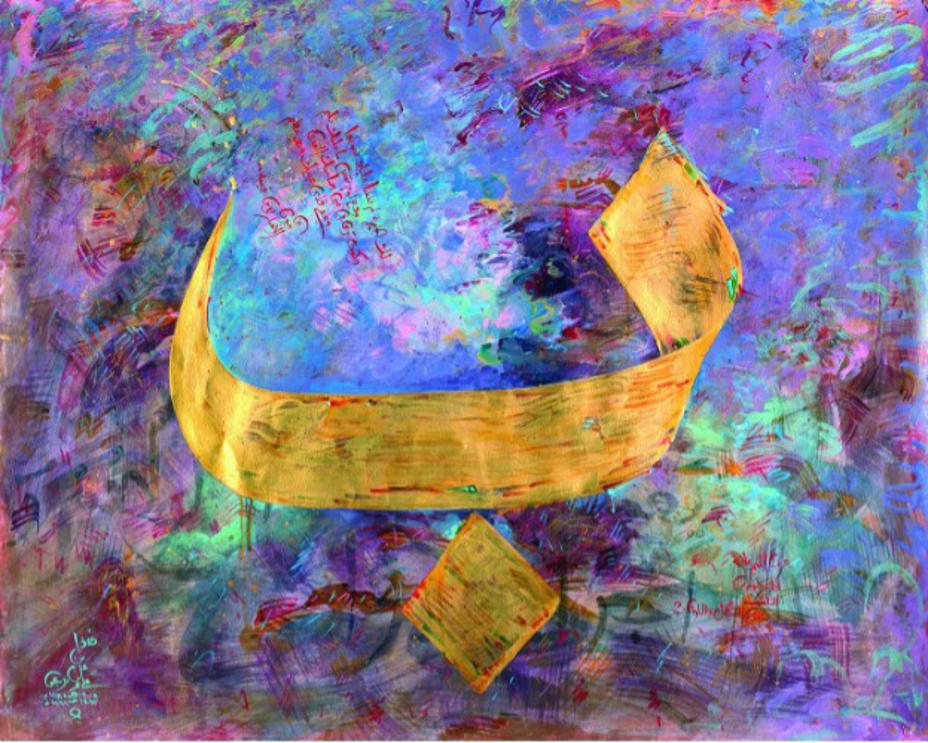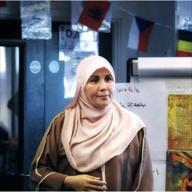
Something went Wrong
Try entering your email again or contact us at support@qfi.org
Try entering your email again or contact us at support@qfi.org
You’ll receive an email with a confirmation link soon.
Apr 29, 2024
By Khaled, F. and Anderson, J.
Language educators can learn so much from the heritage language learners in their classrooms. While textbooks and curricula often ignore the fount of knowledge that heritage language learners can provide, there are many ways that teachers can appreciate and give voice to these students’ knowledge and experiences. Project-based learning, with an emphasis on art and creativity, is one way to bring heritage students into classroom conversations, encourage participation, and help them feel valued and represented.
Heritage language learners value active learning, application to life experiences, and collaborative projects. Art-based learning is one teaching method that checks these boxes by providing opportunities to recognize and celebrate heritage language learner identity. Because there is no “right” or “wrong” in art-based learning, students can build confidence as they interpret what they see, express themselves, and deepen their understanding of the culture and artistic tradition associated with their heritage language. My students share that learning Arabic through the lens of art and poetry “unlocks a door” for greater understanding and appreciation of the language. Heritage students also share increased confidence in their Arab identity after learning about Arab culture through art and poetry.
One project that my heritage students have found meaningful is an interdisciplinary unit that incorporates art and poetry from the Arab world. Students reimagine a painting, such as “Ba Ayoon El-Akhbar” (1992) by Ali Omar Ermes, and pair it with a poem they write and translate around a topic that the art and poetry evoke.
Writing and translating poetry helps students develop their vocabulary, and it shows them the richness and complexity of the Arabic language.
Anfal, one heritage student in the class, shared that the project boosted her confidence in her Arabic language skills and in her identity as a British Arab. She understands how important it is to “talk about our tradition and show people who we are.” As she learns Arabic, she feels greater confidence and pride in the language.
Anfal’s mother shared that the art-based learning “helped Anfal massively improve in her art skills, the ability to analyze paintings very easily, and their connection to her personal life.” She adds, “Anfal became really confident speaking Arabic in public without any shame which is something we definitely need to improve in our society.”
A creative, visual art focus can enrich to the experience of Arabic language and culture learning for heritage students when a learner-centered transformative pedagogical model is followed. The approach demonstrates the possibilities of intertextual meaning making, personal development, active citizenship and affirmation of identity by connecting with personal experiences and beliefs. It goes beyond traditional approaches to language learning, which often feel artificial and insulting, and instead makes language learning real for heritage language learners.
In summary, bringing visual art and poetry into language learning supports personal confidence, affirms pride in identity and inspires active citizenship. Fostering connections between visual art, culture and language provides a rich and engaging context and for heritage language learning.
“Ba Ayoon El-Akhbar” (1992) by Ali Omar Ermes, is the inspiration artwork for this project. Students examine the piece and create their own art piece based on it. For heritage learner Yusra, the work immediately triggered associations with the precarious state of the planet.
Yusra’s first draft of the project: a poem (in Arabic and English), an artistic interpretation of the artwork in conjunction with the poem, and key vocabulary words.
Yusra’s final project, titled “كوكبنا بين يديك” (Our planet in your hands). Combining modes of art and poetic text, the work is fascinating, expressive and highly symbolic.
For further information, see the detailed case study based on three intermediate level students at the Peace school involved in the project mentioned above:
Khaled, F. and Anderson, J. (2023) Textart, identity and the creative process: a case study with Arabic heritage language learners. International Journal of Bilingual Education and Bilingualism, … .
DOI: 10.1080/13670050.2022.2158721
https://www.tandfonline.com/doi/full/10.1080/13670050.2022.2158721 [Open Access]
Let’s keep the conversation going!
Share your experiences, tips and resources for teaching heritage language learners – or your language journey as a heritage language learner.
Write a commentFatima Khaled is Head Teacher of Peace School in North London. The Peace School is a complementary school that provides Arabic language and culture learning for more than one hundred bilingual students. She is committed to cross-curricular, project-based approaches which allow students to invest themselves emotionally in their work and promote student agency and voice. Fatima has participated in the ground-breaking Critical Connections: Multilingual Digital Storytelling Project (2012- ongoing) led by Goldsmiths, University of London. Passionate about her subject, Fatima is a regular contributor to professional development events for teachers of Arabic in the UK and overseas, focusing on the needs of heritage language learners. She works nationally with various organisations to help develop approaches to language learning and is a member of the Association for Language Learning Council as well as working with Scottish CILT. Internationally Fatima works closely with QFI. She is currently completing her doctorate in language education.






